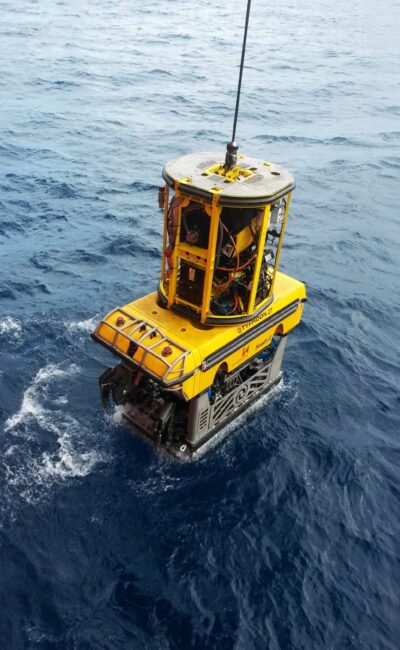- Maritime
Exploring climate change in the Pacific Ocean with Exail Oceano acoustic releases


The vast expanse of the Pacific Ocean, spanning over 60 million square miles, serves as a captivating arena for scientists delving into the intricacies of climate change and its effects on marine ecosystems. From the vibrant coral reefs of the tropics to the icy expanses of the poles, the Pacific’s diverse environments offer a rich tapestry of habitats to study. In this quest for knowledge, advanced technologies such as Exail Oceano acoustic releases have emerged as indispensable tools. These acoustic releases facilitate precise data collection in the often-challenging conditions of the marine environment, streamlining operations and boosting efficiency for researchers.
Powering precision in marine science data collection with acoustic releases
Deployed across multiple sites in the Pacific Ocean, Exail Oceano acoustic releases have consistently helped gather accurate and reliable data, contributing to a better understanding of climate change impacts in the region. Their robust construction and advanced electronics make them invaluable assets for scientists and hydrography institutes seeking to unravel the complexities of this vital ecosystem.
One notable example of their utility comes from the Canadian Department of Fisheries and Oceans (DFO), which relied on Exail Oceano acoustic releases during recent oceanographic monitoring of the British Columbia Coastal Inlets. These missions aimed to collect baseline measurements of physical and geochemical conditions in the area, aiding in the monitoring of climate change and other anthropogenic impacts on British Columbia’s coastal waters.
The Oceano acoustic releases helped collect water samples for analysis of nutrients, oxygen, organic carbon, and suspended particles, as well as measuring temperature and salinity to determine circulation and mixing patterns. During these operations, the Oceano acoustic releases were crucial in ensuring the precise deployment, recovery, and servicing of oceanographic moorings, which record tides, currents, and water properties.

Streamlining operations with smooth deployment
With a deployment capacity in very great depths and a payload capacity of up to 2500 kg, the Oceano acoustic releases have emerged as a trusted choice for its proven durability and resilience to corrosion. Embraced by scientific and hydrography institutes worldwide, its compact, lightweight, and user-friendly design streamlines both deployment and recovery processes, saving valuable time in the field.

“Deploying equipment in the Pacific is no small feat,” noted Pierre-François Adam, Product Manager at Exail. “The reliability and ease of use of Exail Oceano acoustic releases are crucial, enabling researchers to focus on their research goals rather than grappling with cumbersome equipment, becoming an indispensable asset in scientists’ toolkit.”
Ensuring reliable data collection in harsh environments
The Oceano Series release mechanism has been designed to overcome challenges from concretion or biological deposits, ensuring highly reliable release. With a housing built of high tensile strength super duplex stainless steel and equipped with advanced electronics, the Oceano benefits from a design that reduces mechanical interfaces to prevent standing water, improves water flow around the acoustic release, and enhances resistance to corrosion. “Despite harsh operating conditions, the Oceano acoustic releases face minimal issues, allowing teams to focus on research without worrying about equipment failures,” added Pierre-François Adam.
Furthermore, the Oceano offers unmatched battery life for extended deployment periods, lasting up to 60 months with alkaline batteries. Its low consumption and well-designed power management system ensure unparalleled performance. “One standout feature of the Oceano acoustic releases is their extended battery life, allowing for prolonged deployments without frequent maintenance,” noted Pierre-François Adam. “This capability is invaluable in remote research environments with limited equipment access.”

In conclusion, the adoption of Exail Oceano acoustic releases represents a significant leap forward in marine research, especially concerning the exploration of climate change in the Pacific Ocean. Their durability, reliability, and extended battery life make them essential components of scientists’ efforts to monitor and understand the changing dynamics of Pacific coastal waters. As technology continues to evolve, Exail acoustic releases promise to further illuminate our understanding of climate change and its impacts on our oceans.


